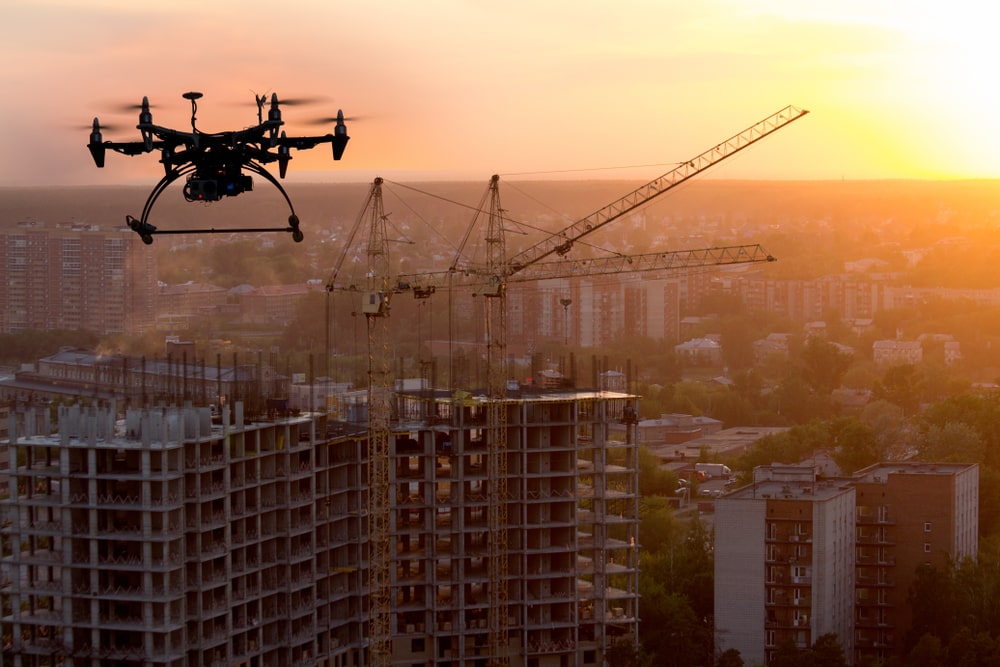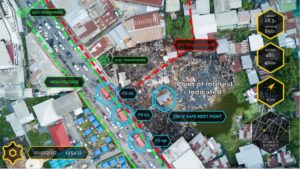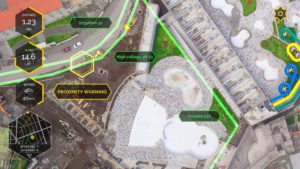Sector - Software & Technology
How tech will transform the construction industry

As new innovations disrupt entire industries, construction is on the cusp of a veritable technological revolution. There’s no better case study than AR-equipped drones, which are set to bring massive gains in safety, efficiency, and productivity.
Pairing drones with AR software provides significantly enhanced situational awareness, offering construction and infrastructure teams a holistic view of their projects with real-time mapping that can pinpoint trouble spots, track progress, and help teams avoid potentially costly and dangerous mistakes. AR drones’ impressive capabilities help explain why Goldman Sachs forecasts that the construction industry represents the largest civilian commercial market for drones, at $116.4M.
The growing integration of such cutting-edge solutions will not only enhance the industry’s day-to-day operations, but also spur new job opportunities and skills development.
Here’s how AR drones work – and what they will mean for the future of the industry.
Making construction safer
In an industry where even tiny oversights can mean harm or even death for workers, drones have a vital role to play in keeping workers safe. Accordingly, advocates like the Laborers Health & Safety Fund of North America have pointed to drones as a key element of any serious plan to prevent injuries and deaths on-site.

The drones’ safety benefits are twofold. First, AR technology allows geospatial data to be overlaid in real-time on drones’ video feeds, greatly improving situational awareness. This data provides construction teams with information and insights they would lack if not for the technology – from the real-time locations of workers throughout a project site to the precise measurements of surrounding structures – thereby helping prevent mistakes that jeopardize worker safety.
Additionally, drones can perform site inspections that are too difficult, too dangerous, or simply impossible for humans to conduct – including high-speed highway work zones, tall structures, and under bridges. This inspection data enables construction and infrastructure teams to do their work with the accuracy and precision necessary to prevent budget overruns or, worse yet, structural defects that endanger life and property.
Bringing unprecedented efficiency
Not only will AR-equipped drones bring major safety improvements, they’ll also unlock significant business value for the construction industry, enabling more efficient operations and bringing the industry up to par on productivity.
Start with the sheer time it takes to complete site inspections. Early adopters of construction drones report that sites which once took up to weeks at a time to survey by hand can now be accurately surveyed within hours. That not only saves time, but enables construction teams to perform more frequent inspections over the life cycle of a project, boosting safety and making it exponentially easier for teams to catch and address potential problems before they become even costlier to solve. But teams can do far more than thwart potential catastrophes: With more regular inspections, they can optimize routine maintenance and ensure structural integrity.
Therein lies another major benefit of construction drones: Driving down the cost overruns that plague a staggering share of projects – particularly those on a larger scale – and eat away at business value. According to McKinsey, large construction projects tend to take 20% longer to finish than originally scheduled, and run up to 80% over budget.

Not surprisingly, the firm notes that construction and engineering lag significantly behind other industries on productivity. Whereas other industries have seen annual productivity increases of three to four percent, construction has averaged only one percent annual productivity gains in recent decades. By bridging that gap, McKinsey forecasts, construction and engineering companies can boost their annual output by $1.6Tr.
A new breed of construction workers
As AR and other disruptive technologies assume a more prominent role in the industry, a new crop of employees will emerge. As PwC notes, construction drones will foster an “exponential increase” in demand for skilled laborers in the industry, including drone pilots, AR specialists, and data scientists.
By training their workforces to assume such roles, construction and infrastructure teams can equip their employees for the jobs and skillsets of the future – while leaving some of the highest-risk activities to drones.
While the latest construction technologies have yet to make their biggest impact, the coming years will see a frenzy of innovative activity in the industry as new products come to market and construction firms aim to reap the safety, efficiency, and productivity gains these technologies promise. From 2011 through early 2017, construction technology companies attracted $10Bn in funding – underscoring the growing demand for game-changing solutions, and foreshadowing the industry’s disruption as the 2020s approach.
AR-equipped drones will rank among the most valuable use cases, ushering in much-needed improvements to safety and efficiency, with workforce upskilling serving as a welcome byproduct. It won’t only be construction firms who benefit: All citizens will enjoy stronger structures, safer communities, and the economic benefits of new job opportunities and greater productivity – all the more reason to cheer the sight of drones buzzing over bridges and building sites.
Article submitted by Adam Kaplan, CEO and co-founder, Edgybees
Related Articles
More Software & Technology Features
- SMEs remain unprepared as cyber threats escalate
19 Apr 24
SMEs neglect cyber security, making them easy targets for a wide range of attacks, including phishing and ransomware.
- How AI technology is making the construction sector safer
8 Apr 24
The most groundbreaking solutions currently changing workplace health and safety are those which harness the power of Artificial Intelligence (AI).
- How technology can improve supply chain resilience in infrastructure project delivery
5 Apr 24
Major infrastructure projects rely on supply chains being resilient in the face of unexpected challenges.






